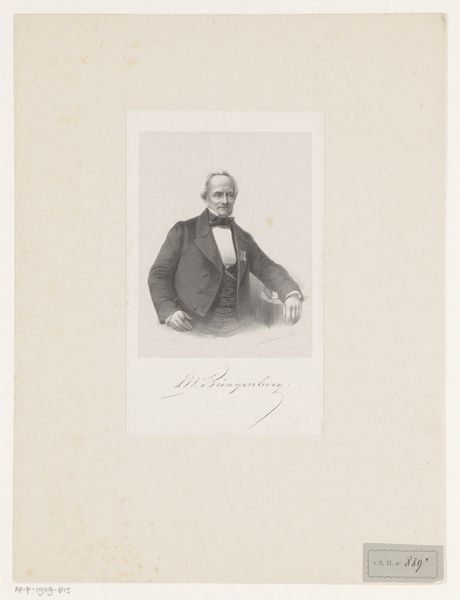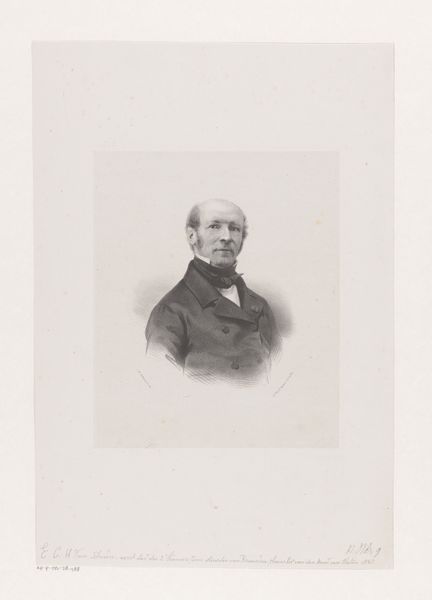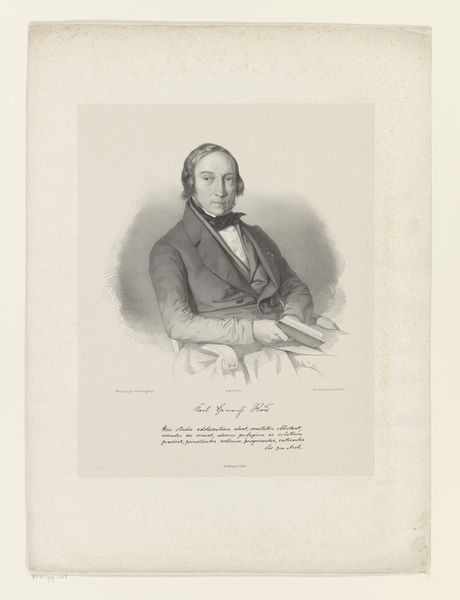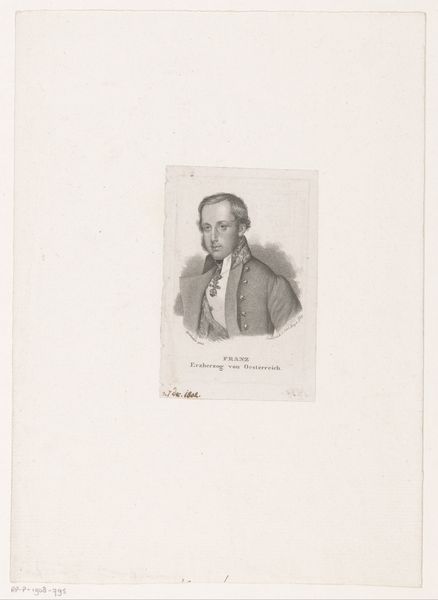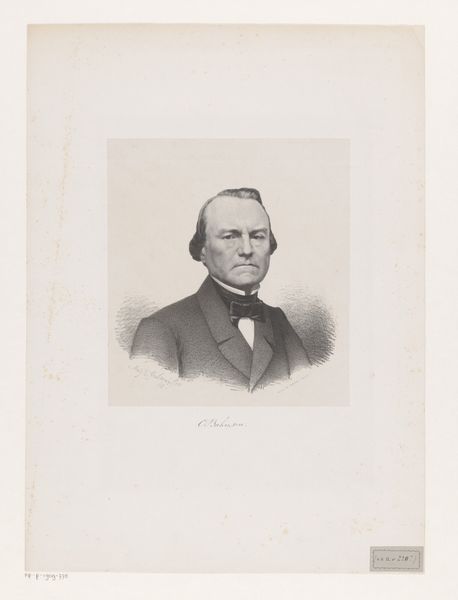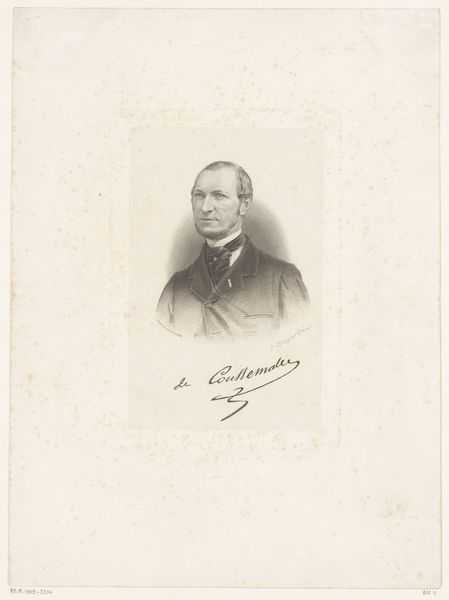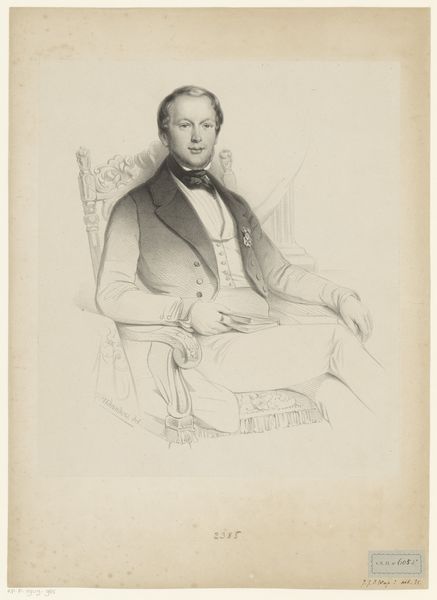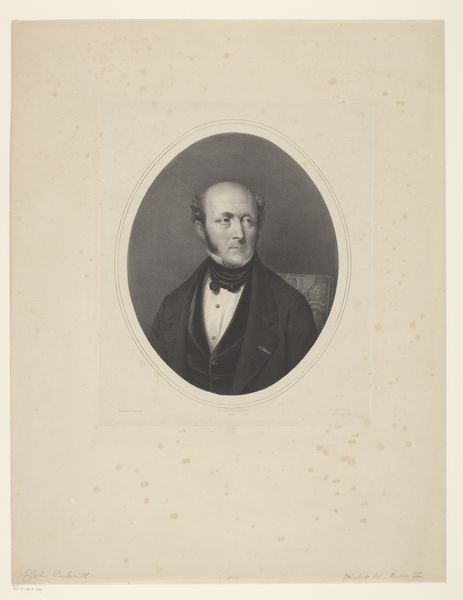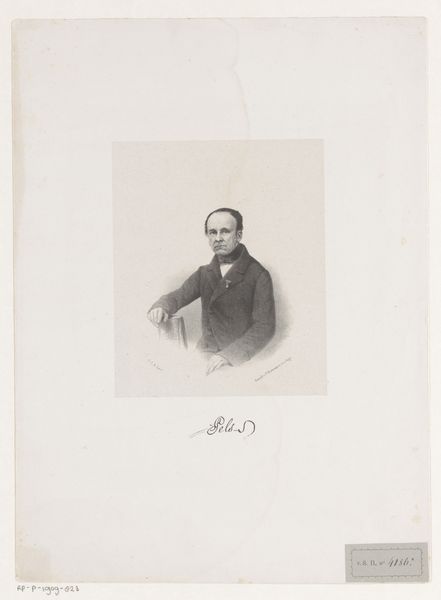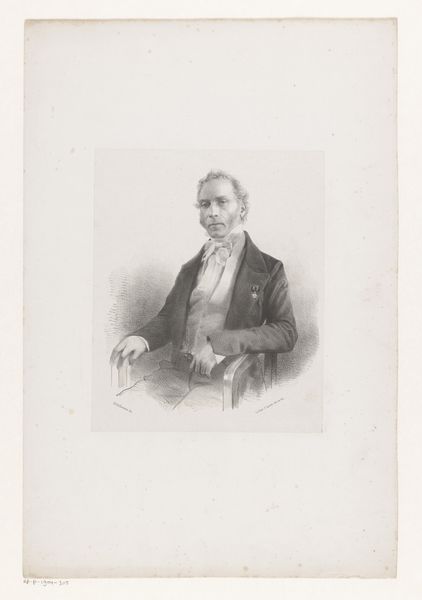
Dimensions: height 430 mm, width 300 mm
Copyright: Rijks Museum: Open Domain
This is Johan Hendrik Hoffmeister’s lithographic portrait of C.E. Leclercq. It's a print, meaning that it could be reproduced many times. This is important because it was made using a relatively new technology that democratized image making, allowing for widespread circulation of images. The lithography process involves drawing with a greasy crayon on a stone or metal plate, then treating it with chemicals so that ink adheres only to the drawn areas. The print's final appearance depends heavily on the artist’s hand. Hoffmeister uses fine lines to create a sense of depth and texture, particularly in Leclercq's face and clothing. The subtle gradations of tone give the portrait a lifelike quality, while the precision of the lines speaks to Hoffmeister’s skill as a draughtsman. Lithography became a key tool for mass communication, particularly in the service of commerce and politics. This portrait, though depicting an individual, reflects broader shifts in society towards industrialization and the rise of a middle class eager to consume and display images of themselves and others. By understanding the materials and processes behind this artwork, we gain insight into its cultural significance and the ways in which art reflects social change.
Comments
No comments
Be the first to comment and join the conversation on the ultimate creative platform.
